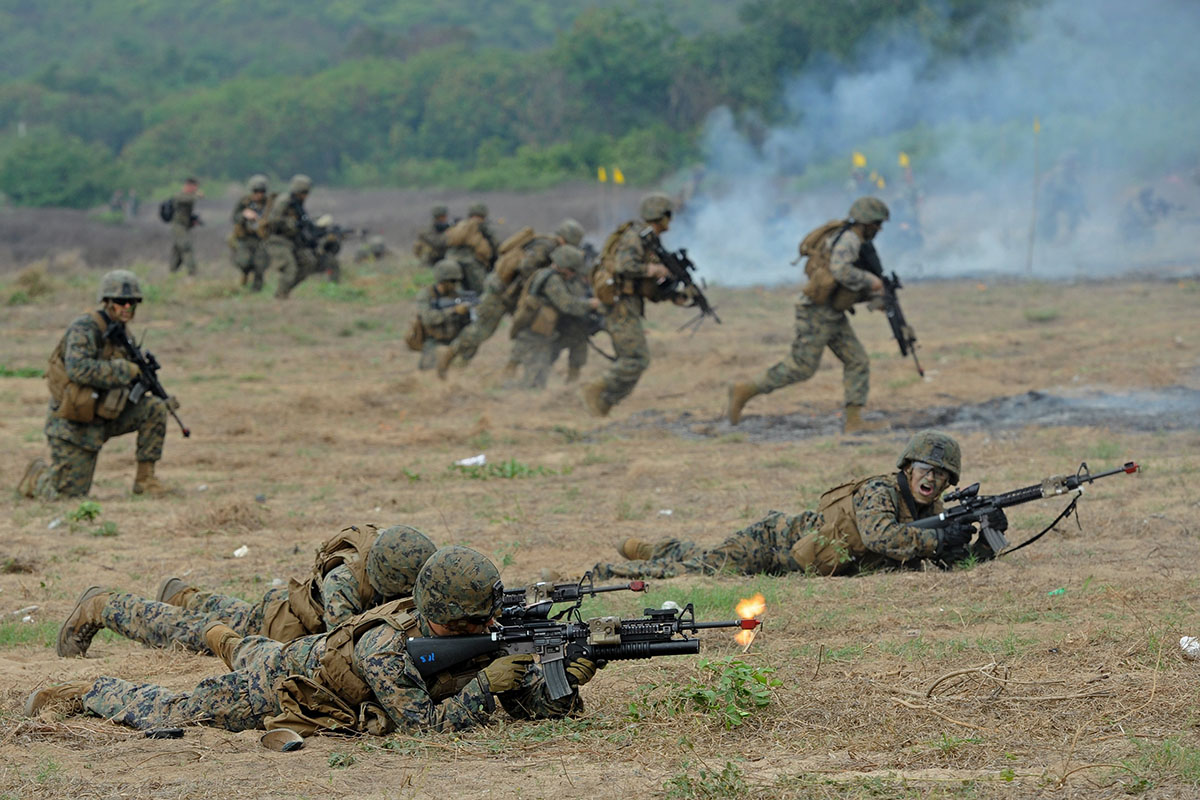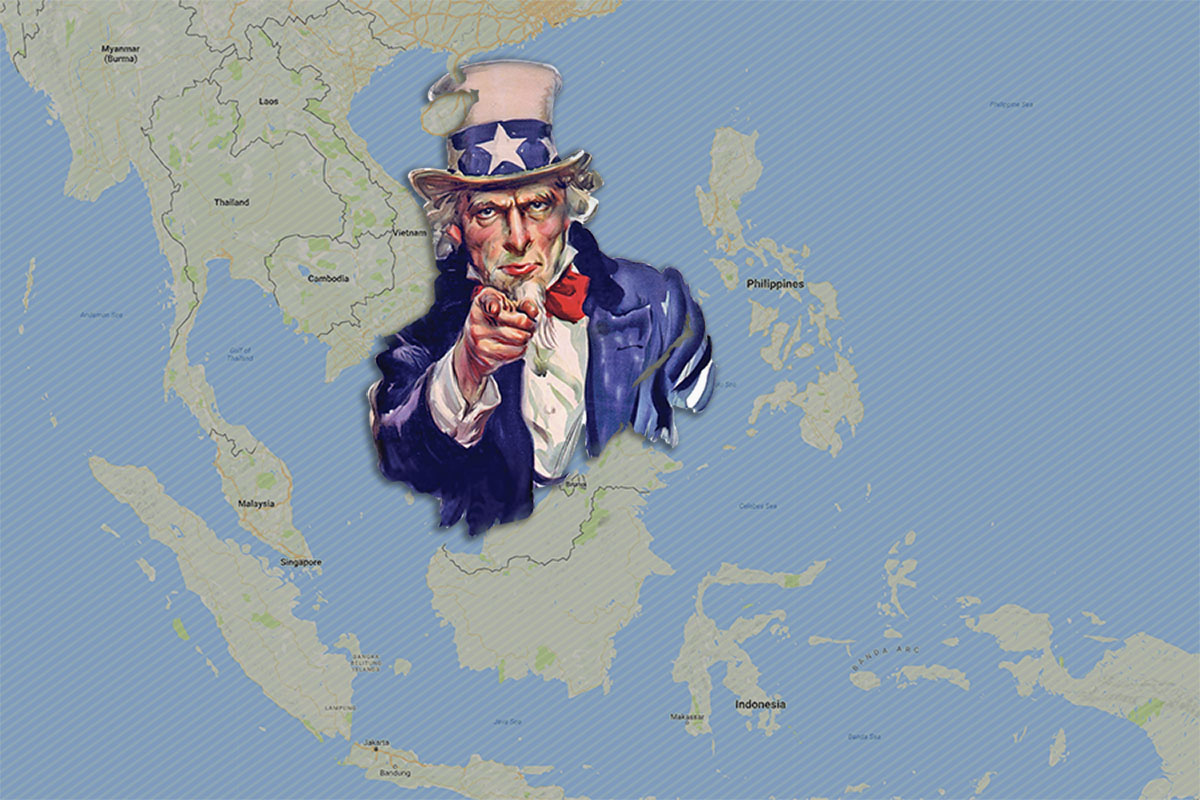The collision involving US destroyer, USS John S. McCain with a civilian oil tanker has raised questions on continued US Naval presence within the region. While Beijing’s “I told you so” reaction may allow them to bask on a slightly inclined moral high ground, the incident does not negate the reality that the presence of the Pacific Fleet is essential for a geopolitically stable Southeast Asian region.
Economically, Washington is up against Beijing’s “charm offensive” as state-backed Chinese corporations have been pivotal in financing billion-dollar infrastructure projects across ASEAN. From 2005 to the second quarter of 2017, 78% of all Chinese investments and construction contracts were funnelled to the energy, transportation and real estate sectors. Currently, the US still has a larger share of FDI inflows to ASEAN at 11.3% in 2015 but it has flatlined after 2014 following a spike in 2013 whereas China’s has seen a growth from 5.1% in 2013 to 6.8% in 2015.
Beijing’s move has received tepid response from those who presume it to be a “debt-trap” and a useful bargaining chip to use in the South China Sea dispute. However, leaders of ASEAN’s emerging economies have more than welcomed, these huge influxes of Chinese investments into their economies.
Senior Fellow of the ISEAS-Yusuf Ishak Institute, Dr Malcolm Cook told The ASEAN Post that, “China would like to see Chinese trade and investment flows into Southeast Asian countries as a more powerful counteracting force to Southeast Asian security concerns with China”. He added that China and most Southeast Asian states often reiterate that the South China Sea dispute should not come in the way of growing economic ties between China and the region. He provided the example of President Duterte who has downplayed the significance of the dispute in exchange for better investment and trade ties with China.
While the economic reality is underpinned by ostensibly gainful Sino-ASEAN relations, ASEAN states are reliant on the longstanding security guarantee provided by the US, to balance the threats of Chinese militarisation and island building within the disputed area. Hence, the US has sought a policy of containment which requires it to leverage on its security alliance with countries within ASEAN to have a stronger naval presence in areas of Chinese claims within the South China Sea.
To date, the US Pacific Command has several military exercise series with ASEAN member states. The Cooperation Afloat Readiness and Training (CARAT) is an annual bilateral affair conducted with the navies of Indonesia, Malaysia, Singapore and Brunei. The Southeast Asia Cooperation and Training (SEACAT) is another military drill which is conducted with the navies and coast guards of 6 ASEAN nations, most recently, with Vietnam early last month. Other prominent exercises include the Balikatan exercise with the Philippines and the Cobra Gold exercise with Thailand which is the largest military drill that the US participates in.

In this picture taken on February 10, 2012, US marines advances during Cobra Gold 2012 military exercise at a Navy base in Sattahip, Thailand. (AFP Photo/Pornchai Kittiwongsakul)
ASEAN claimant countries involved in the South China Sea dispute see US naval presence as a balance to aggressive Chinese actions of island building and militarization within the area. The much-debated Freedom of Navigation Operation (FONOP) is one way the US makes its presence obvious to their Chinese counterparts and serves as a way of checking Beijing’s hegemonic ambitions at the door.
Chinese reaction towards these operations which have been conducted nine times (six during Obama’s presidency and thrice during the Trump administration thus far), have been sour and sometimes punitive. Commenting on heightened US activities within the South China Sea and the East China Sea last May, spokesperson for the Chinese Defense Ministry, Colonel Ren Guoqiang asserted that “the misconduct of the US military will only motivate the Chinese military to strengthen its capabilities and to defend its national sovereignty and security in a more resolute manner.
With that reality in mind, ASEAN member states especially those embroiled in the South China Sea dispute, must very carefully tread between both superpowers given that the relations of individual ASEAN member states with China and the US remain a mixed bag.
Vietnam, now takes up greater levels of military cooperation with the United States and purchases weapons such as air missiles from India who is a strong ally to the US. Hanoi’s relations with Beijing has jaundiced amid an oil and gas exploration dispute at Vanguard Bank, situated near the Spratly Islands.
The Philippines, which used to maintain a sturdy alliance with the US during the Aquino administration is now leaning closer to China and Russia for economic and security purposes. Chinese influence in Cambodia has also grown considerably; the country has closer ties with China, which invests heavily in its economic, military, education and cultural sectors. It has assumed an almost proxy-like as role in Sino-ASEAN matters.
In Malaysia, Prime Minister Najib Razak, recently concluded a billion-dollar infrastructure deal with Beijing and has previously publicly asked the West to stop “lecturing” nations that were once colonised by them. He also, however, maintains personal ties with Trump and has even been invited by the latter to the White House in September.
Along the same vein, Singapore is also keen on strengthening its existing alliance with Washington while also warming up to Beijing. China’s President Xi Jinping recently met with Singaporean’s Prime Minister Lee Hsien Loong at G20 Summit in Hamburg last month. China has discussed plans to implement the belt and road trade initiatives to affirm closer economic ties between the two nations as Singapore assumes the 2018 chairmanship of ASEAN next year with the theme “Partnering for Change, Engaging the World”.
The situation at hand demands a delicate posturing of Sino-US, US-ASEAN and Sino-ASEAN relations. ASEAN cannot afford either the US or China to gain too much of an upper hand within the region and with the latter doing exactly that, it’s imperative for the association to remain sanguine about the presence of the US Navy within the region.
